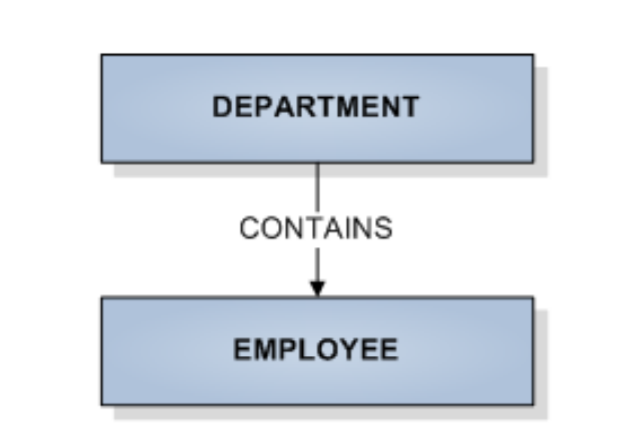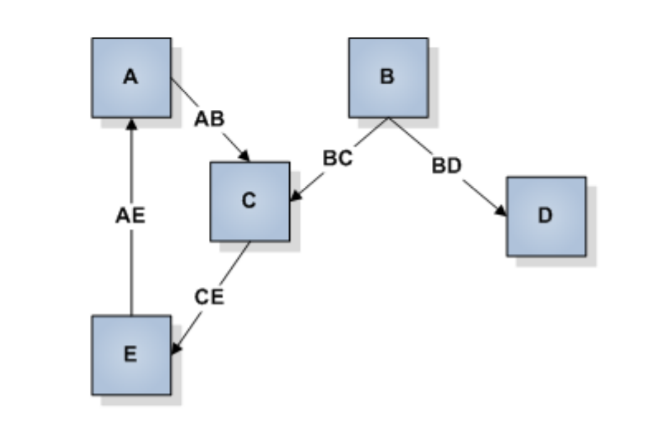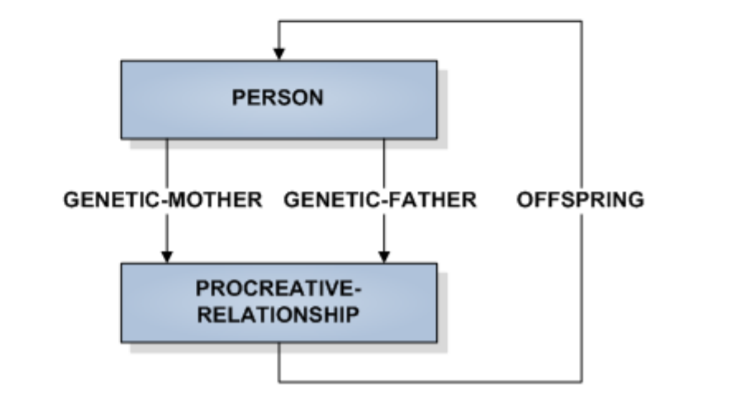A network database consists of a collection of records connected to one another through links. A record is in many respects similar to an entity in the E-R model. Each record is a collection of fields (attributes), each of which contains only one data value. A link is an association between precisely two records. Thus, a link can be viewed as a restricted (binary) form of relationship in the sense of the E-R model.
The Network model commonly represents data and relationships through diagrams containing boxes and arrows. Each box represents a record type and each arrow represents a relationship type. A record type will contain fields, which are used to store individual values, which together represent defining information about the real-world entity the record represents.
For example, if there is a need to store information about employees in a database, it is natural to define an employee record type containing fields such as last name, first name, SSN, Date of Birth, etc. If employees are grouped by departments in a certain organization, then a department should also be defined to store information about one or more departments. The relationship between departments and employees could be called contains. It is a one-to-many relationship, where one department may contain many employees, and each employee (at least for this modeling exercise) can by contained by only one department. A diagram is shown below:

The name "Network model" is used because multiple boxes can be connected to other boxes through multiple arrows:

The Network Model view
A "network" of data relationships that can naturally be visualized is the "family tree." The diagram below shows a network model design in a simple schema diagram.
- In network we can have multiple relationship with other. This feature makes the network Data Model more flexible.
- M:N many to many relation is followed in this.
- This network models are mainly used on a large digital computers.
- Network data model look like cobweb or interconnected network of records.

The network database model allows each record to have multiple parent and multiple child records, which, when visualized, form a web-like structure of networked records. In contrast, a hierarchical model data member can only have a single parent record but can have many child records.
This property of having multiple links applies in two ways: the schema and the database itself can be seen as a generalized graph of record types that are connected by relationship types. The main advantage of a network database is that it allows for a more natural modeling of relationships between records or entities, as opposed to the hierarchical model. However, the relational database model has started to win over both the network and the hierarchical models because its added flexibility and productivity has become more evident as hardware technology has become faster.
Problems with Network Model
Nevertheless, though it was a dramatic improvement, the network model was far from perfect. Most profoundly, the model was difficult to implement and maintain. Most implementations of the network model were used by computer programmers rather than real users. What was needed was a simple model which could be used by real end users to solve real problems. This problem leads to the evolution of Relational Model.
Advantages of Network Model
- Conceptual simplicity
- Handles more relationship types
- Data access is flexible
- Data owner/member relationship promotes data integrity
- Conformance to standards
- Includes data definition language
- (DDL) and data manipulation language (DML)
- it is conceptually simple and easy to design.
- it can handle one to many (0:n) and many to many (n:n) relationships
- the changes in the data characteristics do not require changes to the application programs.
- the data access is easier and flexible than the hierarchical model.
Disadvantages of Network Model
- System complexity limits efficiency
- Navigational system yields complex implementation, application development, and management
- Structural changes require changes in all application programs
- detailed structural knowledge is required.
- there is lack of structural independence.
- the insertion, deletion and uploading operations of any record requires large number of pointers adjustments.
- Log in to post comments